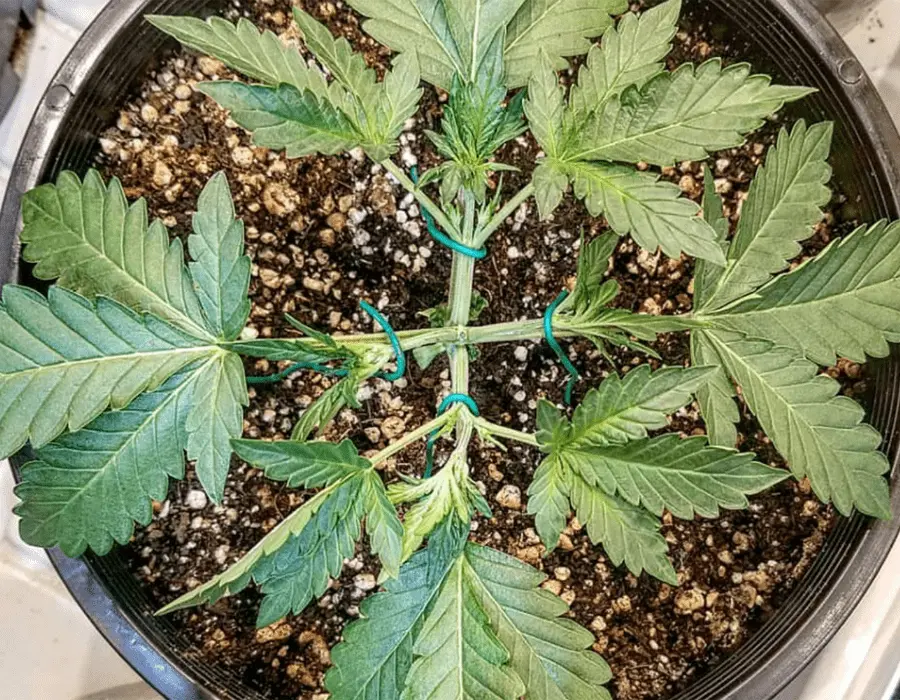In the world of cannabis growing, there are numerous tips and tricks to alter the typical growth pattern of your plants and achieve better yields. These are commonly known as training techniques, and there are two varieties: high-stress training (HST) techniques and low-stress training (LST) techniques.
Here we’ll discuss super cropping, a commonly-used high-stress training technique that forces your plants to redirect growth hormones and energy into lower and side branches, enabling the plant to “bush out” or create denser, more rich foliage capable of supporting larger, more potent buds come harvest time.
What is Super Cropping?
Super cropping is the practice of pinching and bending stalks and branches of your plant without damaging the limb’s exterior tissues. A fairly common practice, super cropping is usually done during vegetative growth and has been shown to be effective at spurring on new lower growth. As a result, these lower branches eventually develop into strong stalks capable of supporting larger buds come the flowering stage.
Super cropping effectively curbs the “apical dominance” of the marijuana plant. Apical dominance refers to the general growth pattern of the cannabis plant, a pattern that produces one main growing tip, the apical tip, and lower branches that receive less energy. This pattern of growth is what gives cannabis plants their Christmas tree-like appearance.
Typically, growers will bend the central, apical stalk during super cropping. However, some growers, particularly when dealing with a well-established plant in the vegetative stage, may opt to bend and pinch some lower branches as well, particularly if they are inhibiting the penetration of light to lower stalks and bud sites. This is particularly important when working indoors under grow lights, as not to waste any light energy.
Why Super Crop Cannabis?
It’s easy to want to deal with your marijuana plants with kid gloves, never touching, rustling or disturbing them. It makes sense, after all: you’ve worked so hard to get them to where they are, and they’re starting to look happy and fill out. You’re anticipating the beautiful main cola forming at the top of your plant, and yet here you are being told to grab that beauty by the stalk and bend it in half until it nearly breaks. What for?
We must think of super cropping in terms of natural, native growth to understand its true purpose. In nature, marijuana plants react to stress in different ways, their primary defence being the production of psychoactive resin laden with THC, CBD, and other cannabinoids, meant to ward off predation.
This immune response is essentially what the cannabis growers are aiming to trigger by implementing high-stress training techniques such as super cropping. Triggering this response will help plants produce more vigorous growth, including sending out secondary shoots and developing lower bud sites.
Super cropping also enables the grower to alter the direction of their plant’s growth. Similar to some LSTs, such as tying and bending, super cropping offers the grower the opportunity to hold down some of their plant’s branches with zip ties, duct tape or plant stakes, forcing the plant to redirect energy in the direction the grower determines.
This makes super cropping a natural choice for growers working indoors and makes it particularly well-suited for SCROG (screen of green), SOG (sea of green), and various hydroponics applications, such as deep water culture, where a single plant is prominent in the setup.
